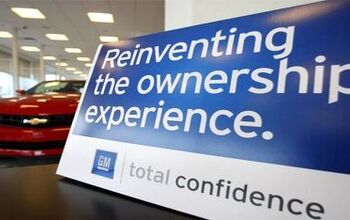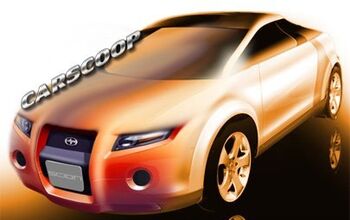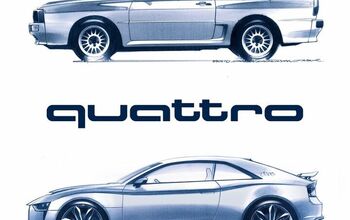Quote(s) Of The Day: Bookends Edition
QOTD is a fairly irregular exercise for us, but we’d be remiss if we didn’t dust it off for today’s marathon hearings before the House Oversight and Government Reform Committee. Needless to say, the ten-ish hour affair offered too rich a bounty of choice quotes to properly choose just one. And so we have two: the first and one of the last quotes of the day’s proceedings. The day opened with the following words from Chairman Edolphus Towns:
Good morning. I thank you all for being here. It is hard to imagine the horror of the event that took the lives of an entire family near San Diego, California on August the 28th, 2009. California highway patrolman, Mark Saylor, his wife, their 13 yr old daughter, and Mrs Saylor’s brother, Chris, were driving in a Toyota Lexus, a loaner car that the Toyota dealer provided while their car was being repaired. As they drove along the highway, suddenly the car… accelerating [sic] rapidly, he stood on the brakes, but nothing happened. No matter what he did, he could not stop the car from flying down the road, faster and faster. As this car reached top speed in just seconds, it was all he could do just to kep it under control. In a frantic call to 911, his brother-in-law, Chris, reported the gas pedal was stuck, the brakes did not work, and they were barreling down on an intersection. He yelled over the phone “hold one, hold on, hold on and pray. And those were his last words.”
Toyota has blinders on about the throttle control unit issue… I don’t know if it’s liability or if there’s a link to a coverup, but there’s a piece of the puzzle missing… I know we’ve put in a long day, but if there’s a piece missing, you don’t stop asking questions.
Yesterday’s hearings were rife with a metaphor, first introduced by the “expert witness” Sean Kane, that “we have a bookend with Dr Gilbert’s work and we have a bookend with consumer complaints.” In short, there are myriad explanations for unintended acceleration, but only an undetectable electronic problem (as suggested by Dr Gilbert’s research) can explain the scenarios described by complaints of unintended acceleration.
Similarly, these two quotes form convenient bookends to the last two days of congressional hearings. On the one hand, the emotional appeal in the form of an inexplicable narrative. On the other, the sense of anger and frustration at congress’s inability to make sense of these mystifying yet troubling anecdotes, with the less than subtle implication that Toyota is hiding something from the bright light of the committee’s investigations. In both cases, the bookends are are necessary only because of the profound lack of rational explanations for many of the stories of sudden unintended acceleration. And in both cases, they represent individuals striving for complex, yet satisfying explanations, when less gratifying but eminently logical explanations (like a combination of pedal obstruction, sticking pedals, and human error) are as obvious as they can be.
Meanwhile, Toyota’s response to these rumors in the corridors of power (see the video above) is straightforward and impressively nerdy. What the innuendo-mongerers in congress fail to understand is that if they simply chided Toyota for its slowness to react to customer complaints and poor global communication, they’d still be seen as defenders of their constituents’ safety, and rightly so. By following Mr Kane’s pied piping of possible yet untraceable electronic gremlins, they’ve run the risk of turning a teachable moment into a recreation of the Audi 5000 frenzy. Which would make for a pair of interesting bookends to the history of unintended acceleration.
More by Edward Niedermeyer
Latest Car Reviews
Read moreLatest Product Reviews
Read moreRecent Comments
- Joe65688619 Under Ghosn they went through the same short-term bottom-line thinking that GM did in the 80s/90s, and they have not recovered say, to their heyday in the 50s and 60s in terms of market share and innovation. Poor design decisions (a CVT in their front-wheel drive "4-Door Sports Car", model overlap in a poorly performing segment (they never needed the Altima AND the Maxima...what they needed was one vehicle with different drivetrain, including hybrid, to compete with the Accord/Camry, and decontenting their vehicles: My 2012 QX56 (I know, not a Nissan, but the same holds for the Armada) had power rear windows in the cargo area that could vent, a glass hatch on the back door that could be opened separate from the whole liftgate (in such a tall vehicle, kinda essential if you have it in a garage and want to load the trunk without having to open the garage door to make room for the lift gate), a nice driver's side folding armrest, and a few other quality-of-life details absent from my 2018 QX80. In a competitive market this attention to detai is can be the differentiator that sell cars. Now they are caught in the middle of the market, competing more with Hyundai and Kia and selling discounted vehicles near the same price points, but losing money on them. They invested also invested a lot in niche platforms. The Leaf was one of the first full EVs, but never really evolved. They misjudged the market - luxury EVs are selling, small budget models not so much. Variable compression engines offering little in terms of real-world power or tech, let a lot of complexity that is leading to higher failure rates. Aside from the Z and GT-R (low volume models), not much forced induction (whether your a fan or not, look at what Honda did with the CR-V and Acura RDX - same chassis, slap a turbo on it, make it nicer inside, and now you can sell it as a semi-premium brand with higher markup). That said, I do believe they retain the technical and engineering capability to do far better. About time management realized they need to make smarter investments and understand their markets better.
- Kwik_Shift_Pro4X Off-road fluff on vehicles that should not be off road needs to die.
- Kwik_Shift_Pro4X Saw this posted on social media; “Just bought a 2023 Tundra with the 14" screen. Let my son borrow it for the afternoon, he connected his phone to listen to his iTunes.The next day my insurance company raised my rates and added my son to my policy. The email said that a private company showed that my son drove the vehicle. He already had his own vehicle that he was insuring.My insurance company demanded he give all his insurance info and some private info for proof. He declined for privacy reasons and my insurance cancelled my policy.These new vehicles with their tech are on condition that we give up our privacy to enter their world. It's not worth it people.”
- TheEndlessEnigma Poor planning here, dropping a Vinfast dealer in Pensacola FL is just not going to work. I love Pensacola and that part of the Gulf Coast, but that area is by no means an EV adoption demographic.
- Keith Most of the stanced VAGS with roof racks are nuisance drivers in my area. Very likely this one's been driven hard. And that silly roof rack is extra $'s, likely at full retail lol. Reminds me of the guys back in the late 20th century would put in their ads that the installed aftermarket stereo would be a negotiated extra. Were they going to go find and reinstall that old Delco if you didn't want the Kraco/Jenson set up they hacked in?

































Comments
Join the conversation
As far as I know, the brakes in the California highway patrolman's Lexus are entirely hydraulic. Therefore, they cannot be affected by software logic errors or electrical problems. Furthermore, the brakes are always stronger than the engine. If you shove hard on the brake pedal and don't let up, the car WILL stop even if the transmission remains in gear and the engine is screaming at full throttle. A highway patrolman should be an expert driver capable of handling emergencies. Partly this is so that he can drive well himself and partly it is so that he can competently evaluate civilians' driving in order to write tickets. This incident was caused by driver failure as much as by mechanical failure. I hope the California Highway Patrol learns from it and improves its driver training program.
I agree that not all manufacturers have software which allows the brake signal to override the throttle input - but they should. There's absolutely no reason not to do it (other than offending the oafs who drive with two feet, which I mentioned earlier). Since the inputs are all there, and it certainly makes the car safer in the event of any mishap, I just don't see the reason not to add a few lines of code. I know that GM and Chrysler have had a brake override since they first introduced electronic throttles (o.k., so that's only one major manufacturer). But still, since there's no rational reason to allow the throttle signal priority over the brake, why not use the tools in your possession to do something about it. The argument that "they never had brake override when throttles had cables" doesn't fly either. Just because they didn't have them doesn't mean they wouldn't have been a good idea, if feasible. Brake override software in the electronic throttle control era is easy, costs almost nothing, and makes the car much safer in the event of a stuck pedal, electrical malfunction, misplaced feet, or any other scenario yet to be imagined. All you Best & Brightest out there with non-Toyota cars that equipped with electronic throttles: try applying the brake and throttle at the same time (with the car moving) and see what happens. I'd bet that most of them limit engine torque at some point. And finally, I agree that stopping a car with the throttle wide-open is possible, but the window to do so is not very long. If the brakes get too hot, fluid inside the caliper boils, and you lose braking force. I don't think your average passenger car has a lot of headroom for overheating the brakes, so you may be able to haul it to a stop (if you react quickly for forcefully in applying the brake), but if try to just slow it down for a while, the brakes will cook and it's game over (unless you have the presence of mind to turn the ignition off or put it in neutral). When a person is panicking, the best thing that can happen is to have the engine control software react quickly and reduce engine power.